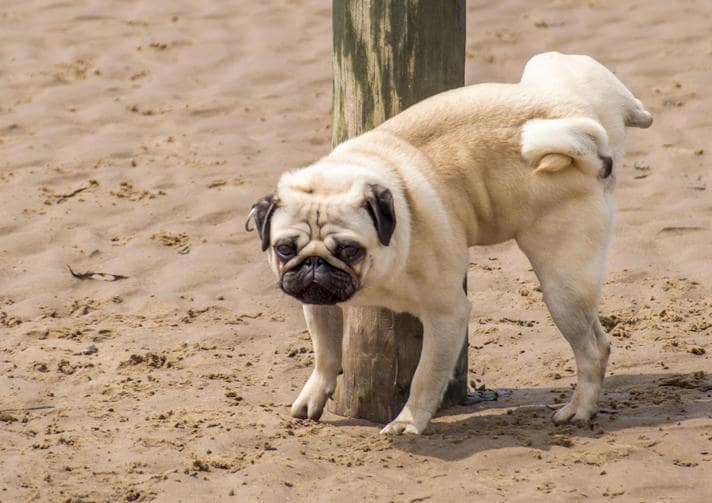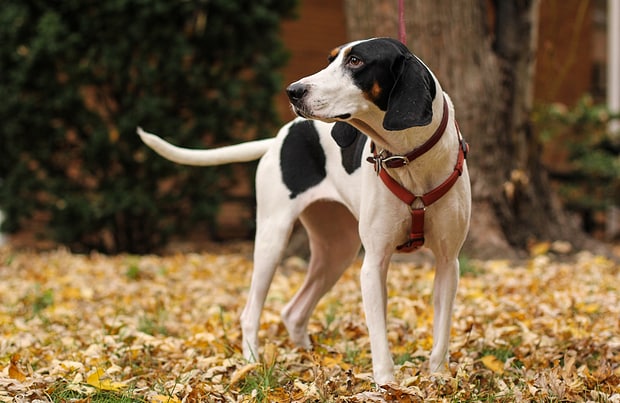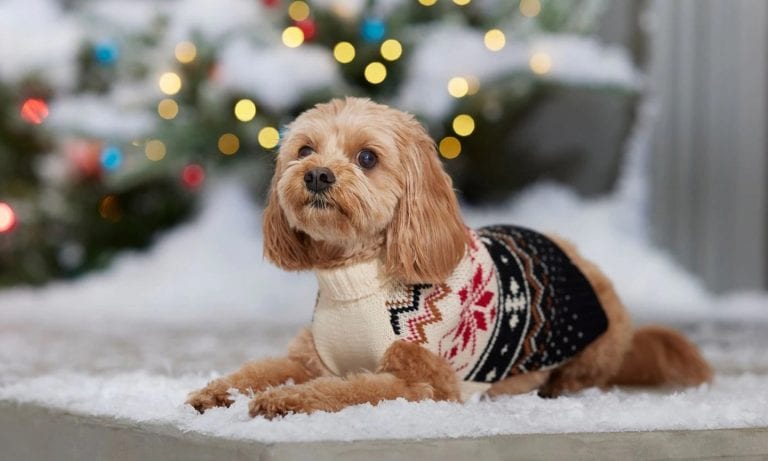One of my closest friends, Michelle, adopted a Blue Heeler dog from a local rescue and named her Annabelle. She dreaded having to housebreak Annabelle because of her age. An untrained adult dog has spent the first part of her life going to the bathroom wherever she felt like it. Needless to say, Michelle was overjoyed to discover that Annabelle was already housetrained! In fact, in the more than one year Michelle has lived with her, Annabelle has never had an accident.
Many adult dogs are already housebroken, but some are not. If you’ve just adopted an adult dog—between the ages of 1 to 6 years, depending on the breed—and that dog is going to the bathroom in the house, your task may be a little more challenging. Adult dogs have established behaviors and habits, and it takes a bit more work to undo some of those tendencies. However, it can be done! One positive thing about adult dogs: They have a longer attention span than puppies and often are eager to please.
Housebreaking an adult dog requires consistency, diligence and patience. Your dog will need a lot of time and repetition before going to the bathroom outside becomes a matter of course. Keep in mind that you are starting from scratch with your adult dog’s training in this department.
Your goal is to make peeing and pooping outdoors a habit with your dog. Do this by making sure these events always happen outside. Your dog will eventually come to associate relieving himself with being outside, and will only eliminate out there.
Use a dog crate to housebreak your adult dog. The small space becomes your dog’s den or home. Not even young puppies think it’s OK to go to the bathroom in their dog beds. So by keeping your dog in a crate at night and when you aren’t able to supervise him, you encourage him to hold his bladder and bowels. You can then control where and when he relieves himself.
House Training Pointers
Different methods of house-training exist, but the following techniques have proven successful for many dogs and their owners.
- Use the crate: Start by teaching your dog that being in his crate is a good thing. Feed him inside the crate and give him his favorite dog chew toys when he’s confined. If your dog has never been kept in a crate, get him used to it gradually over a couple of days before you close the door for an extended period of time. Don’t crate him for more than four hours at a time, except at night when you are sleeping. And be sure to give him plenty of exercise and attention during the times he is out of the crate.
- Give frequent breaks: Adult dogs typically need to urinate every few hours. While you are housebreaking your dog, try to take him outside to go to the bathroom several times a day. Ask a friend or hire a pet sitter to take your dog out a couple of times a day if you are at work or away all day.
- After-meal breaks: Adult dogs typically need to poop within an hour after eating. Feed your dog at least twice a day, and do it at a time when you can take him outside within the hour. Exercise can also stimulate a bowel movement, so after he eats, take him on a stroll around the yard so he can go.
- Restrict freedom: Avoid allowing your adult dog too much freedom during house-training. If you let him roam around the house at will, he will go to the bathroom whenever the mood strikes him. In no time at all, he will develop the habit of going indoors instead of out. (And you’ll be spending a lot of time cleaning up after him.) Instead, keep him with you at all times, either on a leash, in his crate or in an exercise pen (available at pet supply retailers).
- Watch for signals: If you see your dog sniffing around with his nose to the ground, get him outside. This is a common signal that a dog is ready to go. The more time you spend with your adult dog, the sooner you will recognize the signs that he’s about to go to the bathroom.
- Pick a spot: When you take your adult dog outside to pee or poop, keep him on a leash and always take him to the same area. This gets your dog into the habit of using this spot as a bathroom.
- Establish a command: Waiting for your dog to go can get frustrating if he does not go right away. To avoid this situation, teach your dog a command to urinate. “Go potty!” was my cue to my Corgi, Nigel. Whenever he heard this from me, he knew that I expected him to lift his leg, and soon. Teaching a potty command is easy. As soon as your dog starts to pee, give the command. Do this consistently every time and he will come to associate your words with the act of relieving himself.
- Use praise: When your dog goes to the bathroom outside, give him plenty of kudos. Tell him what a wonderful boy he is, in your most enthusiastic voice. Wait until he has completed the act before you do this, though — you don’t want to distract him while he’s relieving himself.
- Establish a routine: Try to keep your dog on a schedule. Feed him around the same times each day, and take him outside for pottying and playing consistently right after. A routine helps him learn the concept of going to the bathroom outside, not whenever the urge strikes.
- Never punish: Never hit a dog with a rolled up newspaper if he goes to the bathroom in the house; this is both abusive and ineffective. The best way to teach is by ignoring mistakes and praising good behavior.
By: Audrey Pavia
Featured Image: Nathanx1/iStock/ThinkStock
Share:









